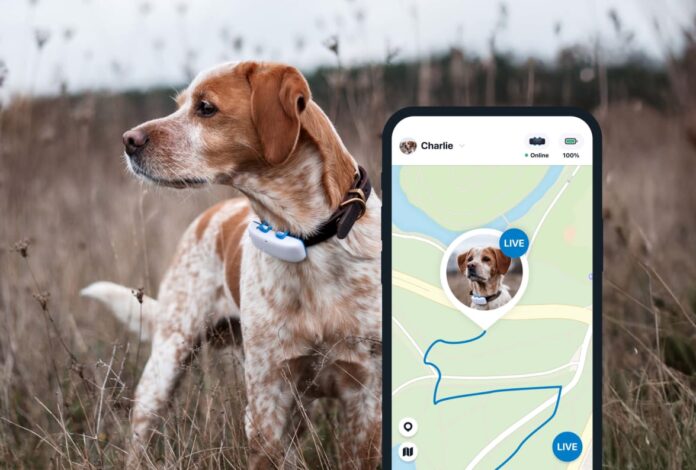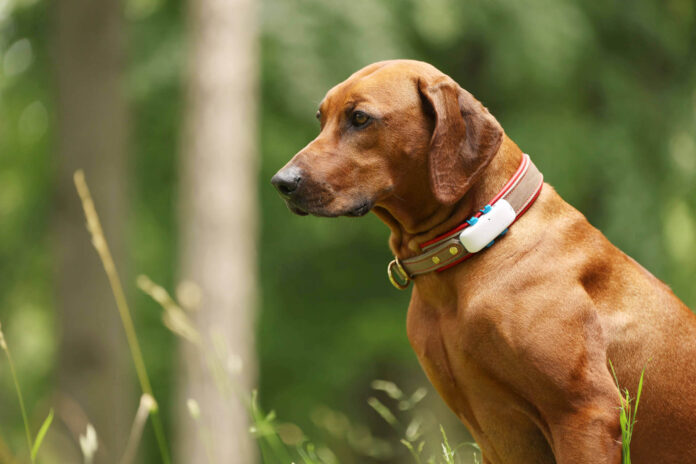Our pets hold a special place in our hearts, particularly dogs, often called ‘man’s best friend’. To many, a dog isn’t just a four-legged creature that lives in their homes; it’s a cherished family member.
In the same way, we wouldn’t think twice about securing our human family members, ensuring our dog’s safety becomes paramount. The evolution of technology has enabled parents to keep a watchful eye on their children through various tools.
Similarly, GPS trackers for dogs have entirely redefined pet ownership. In our rapidly evolving, and at times unpredictable society, these trackers aren’t just fancy gadgets but have become essential instruments. They grant owners the invaluable peace of mind that their fur baby is not just wandering but is traceable, secure, and protected.
Understanding GPS Trackers for Dogs
In today’s technologically advanced age, the Global Positioning System (GPS), a network powered by 24 satellites orbiting Earth, is a name we hear quite often. For dog owners, this technology is nothing short of a miracle. Let’s break it down: Once a GPS tracker is securely attached to your dog, it begins transmitting signals to these satellites.
These satellites, in turn, work together, triangulating signals from various sources, pinpointing the precise location of your beloved pet down to a few meters.
At the heart of each tracker lies the GPS module responsible for sending these signals. Additionally, there’s a battery powering the device and, in many instances, a GSM module.
This GSM feature is what bridges the gap between the tracker and you, the owner. It sends the tracker’s location data straight to your smartphone or any dedicated device, enabling real-time tracking of your pet.
Types of GPS Trackers

Navigating through the world of GPS Trackers for Dogs, one discerns mainly two categories: collar-mounted trackers and tag-based trackers.
Collar-mounted Trackers: Picture a robust dog collar, but with an integrated tracking device. These trackers are firmly embedded, making them a permanent fixture of the collar.
- Pros: Their design makes them highly durable, and resistant to various elements, especially water. And given their integration, the chances of them falling off are minimal.
- Cons: However, for petite or younger dogs, the weight might be cumbersome.
Tag-based Trackers: These are more like pendants or charms, designed to effortlessly attach to any standard dog collar, reminiscent of an ID tag.
- Pros: Their biggest advantage is their lightweight design, ensuring they don’t burden your dog and universal compatibility with any collar.
- Cons: Given their attachments, they might be prone to getting detached or lost.
When selecting between these, you should weigh the pros and cons, considering factors like your dog’s size, its activity levels, and the terrains it frequents.
Features to Look for in a GPS Tracker
When investing in a tracker, certain features are non-negotiable. Real-time Tracking is pivotal, ensuring you receive live, up-to-the-minute updates on your pet’s whereabouts. This can be crucial during emergencies. Battery Life is another critical aspect; after all, a tracker without power is of no use.
Prioritize devices that can hold a charge for several days. Range determines how far the tracker can transmit data; ensure it’s suitable for your locale, especially if you live in vast open areas. Lastly, Smartphone Compatibility ensures you receive timely notifications directly on your device, turning it into a monitoring hub.
When considering the safety of using GPS trackers for pets, it’s essential to address the question: Are GPS pet trackers secure? as explored in the related article about tracking devices for dogs.
Benefits of Using GPS Trackers for Dogs

Beyond the evident peace of mind, the benefits of GPS trackers are multifold. The most significant advantage remains the ability to swiftly locate lost or wandering dogs. This feature alone can avert numerous heart-wrenching situations of lost pets.
Additionally, for those dogs with an active streak, these trackers come equipped with activity monitors, enabling owners to ensure their pets are getting the right amount of exercise.
And for adventure-loving owners, who prefer having their dogs accompany them on hiking or camping trips, these trackers are indispensable, offering an added layer of security in unfamiliar terrains.
Choosing the Right GPS Tracker for Your Dog
Selecting a GPS tracker isn’t as straightforward as picking the most popular or the priciest. It requires introspection about your dog’s unique needs. Smaller breeds, for instance, might benefit from a lightweight, tag-based tracker. However, if you have an athletic or water-loving dog, attributes like durability and waterproofing should be prioritized.
Before making a purchase, understand what you’re seeking in a tracker, study the product specifications, and perhaps read some user reviews to ensure they align with your expectations.
When considering the usage of GPS trackers for dogs, it’s worth delving into the lesser-known facts about these devices, as discussed in the related article.
Setting Up and Using a GPS Tracker

Upon selecting the perfect tracker, getting started is usually a breeze. Most modern trackers are designed to be user-friendly. Typically, they come with a companion app, meant for your smartphone. Kick off by downloading this app, setting up an account, and charging your tracker.
Once charged, attach it to your dog’s collar, ensuring it’s secure. The final step involves syncing the tracker with your app, usually done through Bluetooth or similar technology. And voilà, your dog’s adventures are now trackable right from your device!
Tips for Ensuring Tracker Accuracy
Accuracy is the backbone of any GPS tracker. For optimal performance, ensure your tracker’s battery is always charged and inspect regularly for any signs of physical damage, which might hinder its functionality.
While these devices are designed for precision, certain environments, especially those dense with buildings or tall trees, might cause signal interference. Regularly testing the tracker, especially after a software update or when visiting a new environment, ensures you’re always in the know about your pet’s location.
Safety and Privacy Considerations
In an age where data breaches are not uncommon, ensuring the data regarding your pet’s location remains private is crucial. Seek out trackers that encrypt this data, providing an added layer of security. Furthermore, some trackers come with a shared tracking feature, allowing loved ones or dog sitters to monitor your pet. While useful, be discerning about whom you grant this access to, ensuring your pet’s safety isn’t compromised.
As you delve into the world of GPS trackers for dogs, remember that understanding the needs of your furry friend from puppyhood to adulthood is crucial, and these 7 essential tips for new dog parents can guide you through the journey, as discussed in the related article.
Conclusion

In the grand tapestry of our lives, our dogs add vibrant colors of joy, loyalty, and unconditional love. It’s only fitting that we employ every tool at our disposal to ensure their safety.
A GPS tracker, in this endeavor, is more than just a tool—it’s a guardian angel, watching over our furry friends. Like all technology, it demands responsibility, understanding, and upkeep from our end. But the tranquillity and assurance it offers in return make it an undeniably worthy investment.









